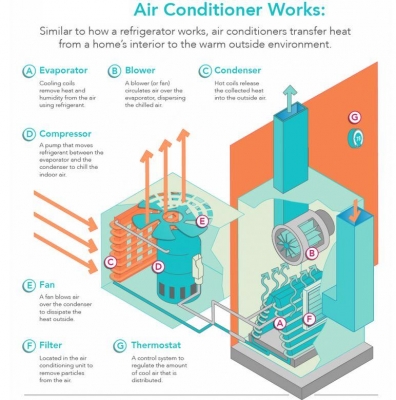How does an air-conditioner work?
An air-conditioner is an electrically operated device used to keep houses, offices, and laboratories cool during summer and warm during winter. It not only controls temperature but also regulates humidity. Nowadays, air conditioners of all types and sizes are available. The big air-conditioner plants are capable of cooling or heating an entire building.

In general, an air-conditioner keeps the temperature between 20°C and 25.5°C and relative humidity around 35-70%. An air-conditioner plant consists of a compressor and a cooling liquid like the Freon gas. The cooling liquid evaporates in the cooling coil. This vapor is then carried to the electrically-operated compressor. It then goes to the condenser where it is cooled by air or water as it passes through the radiator. Here the vapor changes to a liquid giving off heat in the process. The compressor thus serves to transfer heat from one place to another. A fan sends fresh air into the room which keeps the temperature of the room to the desired level. The air-conditioner has certain substances which remove the moisture from the room. It also has filters to remove the dust particles from the air. This is how an air conditioner controls the temperature and humidity and keeps the air clean. Some air-conditioners have attachments that provide hot air in the winters.
Many new buildings, factories, and homes are now being designed to include air-conditioning. Ships, airplanes, cars, offices, restaurants, theaters, shops and space vehicles make use of this steady flow of comfortable, purified air.